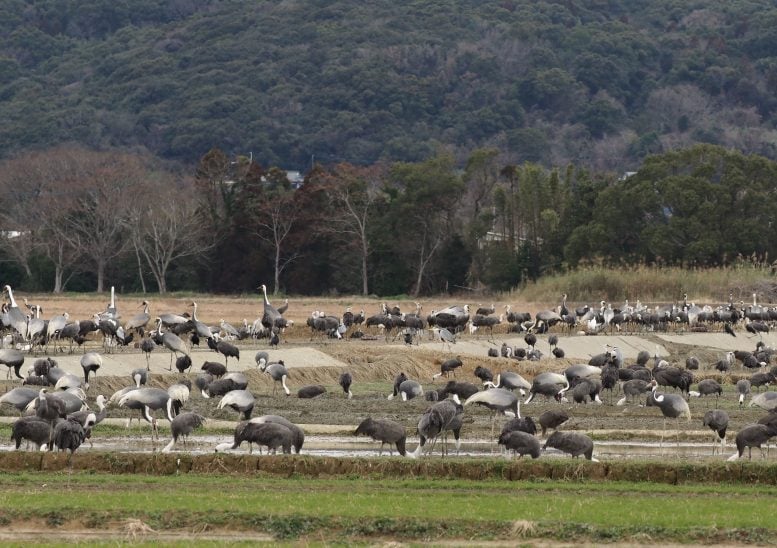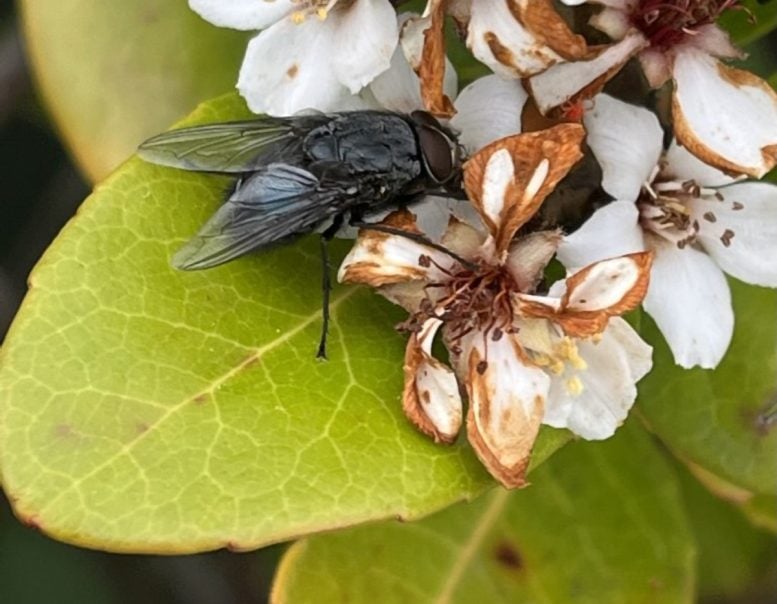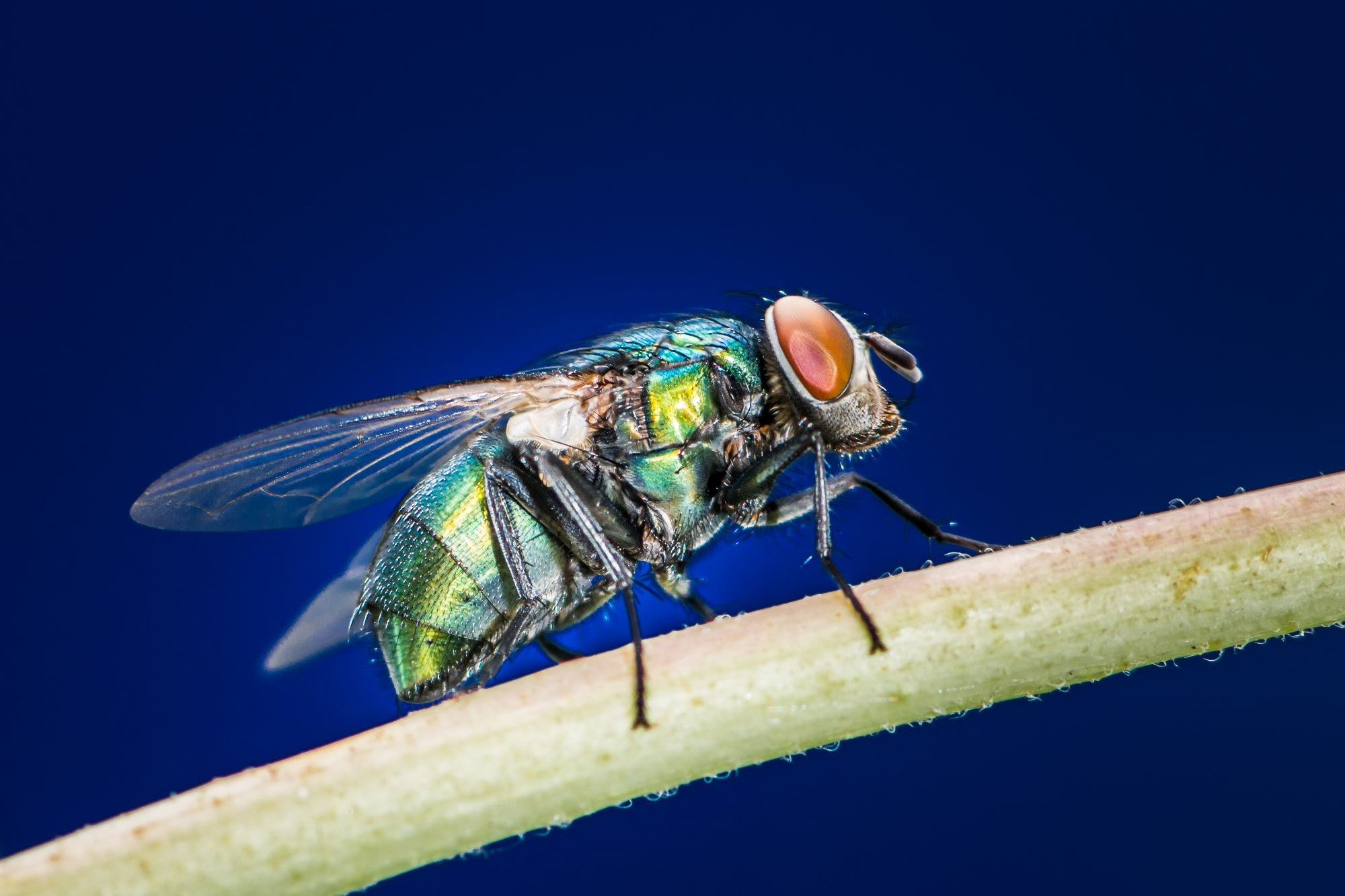Researchers at Kyushu University discovered that blowflies in southern Japan carry the bird flu virus, potentially introducing a new route of transmission. Their findings, which highlight the significant implications for poultry farming and public health, suggest that controlling these insects could be crucial in preventing further outbreaks.
A recent study conducted in a wild bird colony in southern Japan indicates that blowflies could be a possible vector for the transmission of bird flu.
Researchers at Kyushu University have found that blowflies, which are highly attracted to decaying flesh and feces, are carriers of the bird flu 
In winter, thousands of cranes migrate to Izumi city in Southern Japan. During winter 2022-2023, 1600 cranes out of colony of 10000 cranes died from bird flu. Credit: Ryosuke Fujita, Kyushu University
“Bird flu has been causing substantial damage to wildlife and the poultry industry, and also holds great risk for humans who work closely with livestock. It’s therefore vital to understand how the virus spreads and its potential routes of transmission to control and prevent outbreaks,” explains first author Associate Professor Ryosuke Fujita of Kyushu University’s Faculty of Agriculture.
In this research, the scientists studied a wild crane colony in Izumi city, Kagoshima Prefecture, in southern Japan. In winter, the prime season for bird flu, thousands of cranes migrate to this area, with their dense numbers making them vulnerable to infection. During winter 2022-2023, 1600 cranes out of a colony of 10000 cranes died from bird flu.
“We were notified about the cranes being infected and we had to act quickly,” says Fujita.
Blowfly Role in Virus Transmission
Along with his colleagues, he set traps at different locations around Izumi city to collect blowflies. “We were particularly interested in one 
Blowflies, a family of flies strongly attracted to decaying flesh and feces, are carrying the bird flu virus in southern Japan, highlighting a potential new route of bird flu transmission. Image captured from Kyushu University’s Biodiversity Conservation Zone. Credit: Ryosuke Fujita, Kyushu University
Unlike birds and mammals which the virus infects and replicates inside, blowflies instead ingest the virus from infected dead birds or their waste, with the virus maintaining infectivity for up to two days. Blowflies are capable of flying at least 2 km per day, so the researchers estimate that is it feasible for them to reach nearby poultry farms or other wild bird populations within a 4 km range. The researchers believe that as the blowfly moves from place to place, it could contaminate surfaces, food sources, and water sources, with healthy birds becoming infected through direct contact with these contaminated sources, or by ingesting adult or larval blowflies.
In Japan, where farmers often use closed farming systems instead of open spaces to control infections and maximize production, countermeasures aimed at eliminating blowflies could be implemented fairly easily, helping to protect farmers from severe financial damage.
“By keeping areas clean and using fly control methods, such as fine nets or insecticides, we can reduce the risk of virus spread to indoor poultry farms. However, in outdoor farms in other countries, and in wild bird populations, controlling blowflies may be logistically impossible,” says Fujita.
Having identified that blowflies carry the virus, Fujita and his colleagues are now collaborating with the government to capture blowflies in quarantined sites around infected poultry farms, hoping to find definitive evidence that blowflies are causing these outbreaks. Fujita and his colleagues are also developing new tools that use DOI: 10.1038/s41598-024-61026-1
The study was funded by the Japan Society for the Promotion of Science.





















Discussion about this post